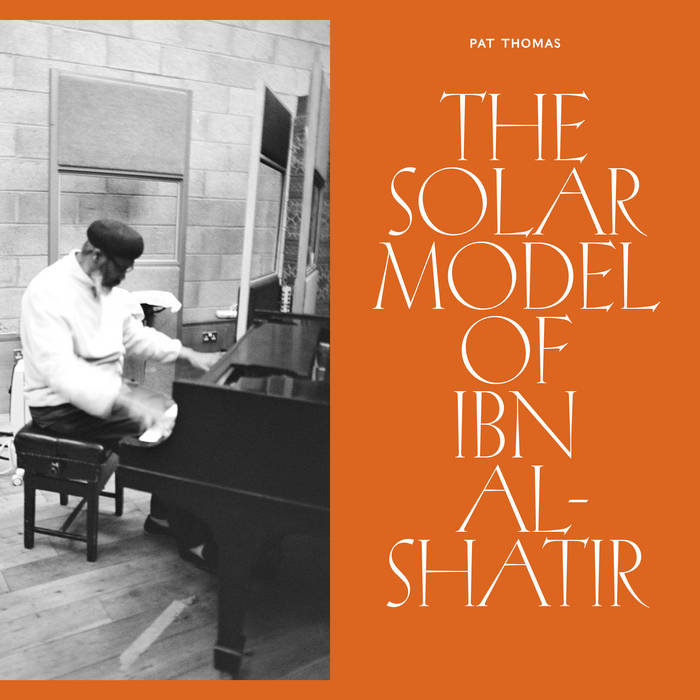Over the course of his more than three-decade career, Pat Thomas has made a name for himself as one of the most inventive voices in the UK free music scene. Having emerged under the tutelage of giants such as Derek Bailey and Tony Oxley, Thomas is one of the few improvisers who can justifiably claim to have taken up their mantle. He has undeniable chops as a jazz pianist, but the heart of his invention comes from his ability to hear radical and experimental potential in forms of music – such as reggae, jungle and funk – that are often isolated from the high-minded spaces of the classical and new music spheres.
Unfarily overlooked for most of his career, Thomas has recently received a much deserved burst of attention for his work with the powerhouse quartet [Ahmed], named in tribute to the great Arabic jazz synthesist Ahmed Abdul-Malik. In this context, The Solar Model of Ibn Al-Shatir provides a welcome look at his range and prowess as a solo pianist. The record situates Thomas’s playing in the greater jazz tradition, and tracks such as ‘For George Saliba’ and ‘For Mansa Musa’ showcase an almost stride-like approach, however abstracted the results may be. The record includes a number of unabashedly pretty moments, such as on ‘The Oud of Ziryab’, where Thomas plays with a delicacy that calls to mind Oscar Peterson.
This isn’t to say The Solar Model of Ibn Al-Shatir is a straight-ahead jazz album, by any means. The centerpiece of the album is the semi-title track ‘The Solar Model’, a twenty-minute piece that focuses mostly on the percussive lower register of the instrument. The piece sounds as if John Cage’s prepared piano pieces evolved into a tight groove before bursting into open-ended clusters. ‘For Ibn Al Nafis’ is spiky and atonal, with piercing high notes punctured by open space and hammering percussive notes.
As a whole, The Solar Model does seek to frame Thomas’s playing within a greater lineage, but not in the needlessly limiting notion of “the tradition” – i.e., the idea of jazz’s evolution as a straight line from Armstrong and Ellington to Bird and Monk. In invoking great polymaths such as Ibn Al Nafis and Ziryab, Thomas is framing his music within a spiritual lineage of science, discovery and invention, deeper than just music and certainly just jazz. “The tradition,” as Thomas sees it, is nonlinear and multidirectional – just like his music.


